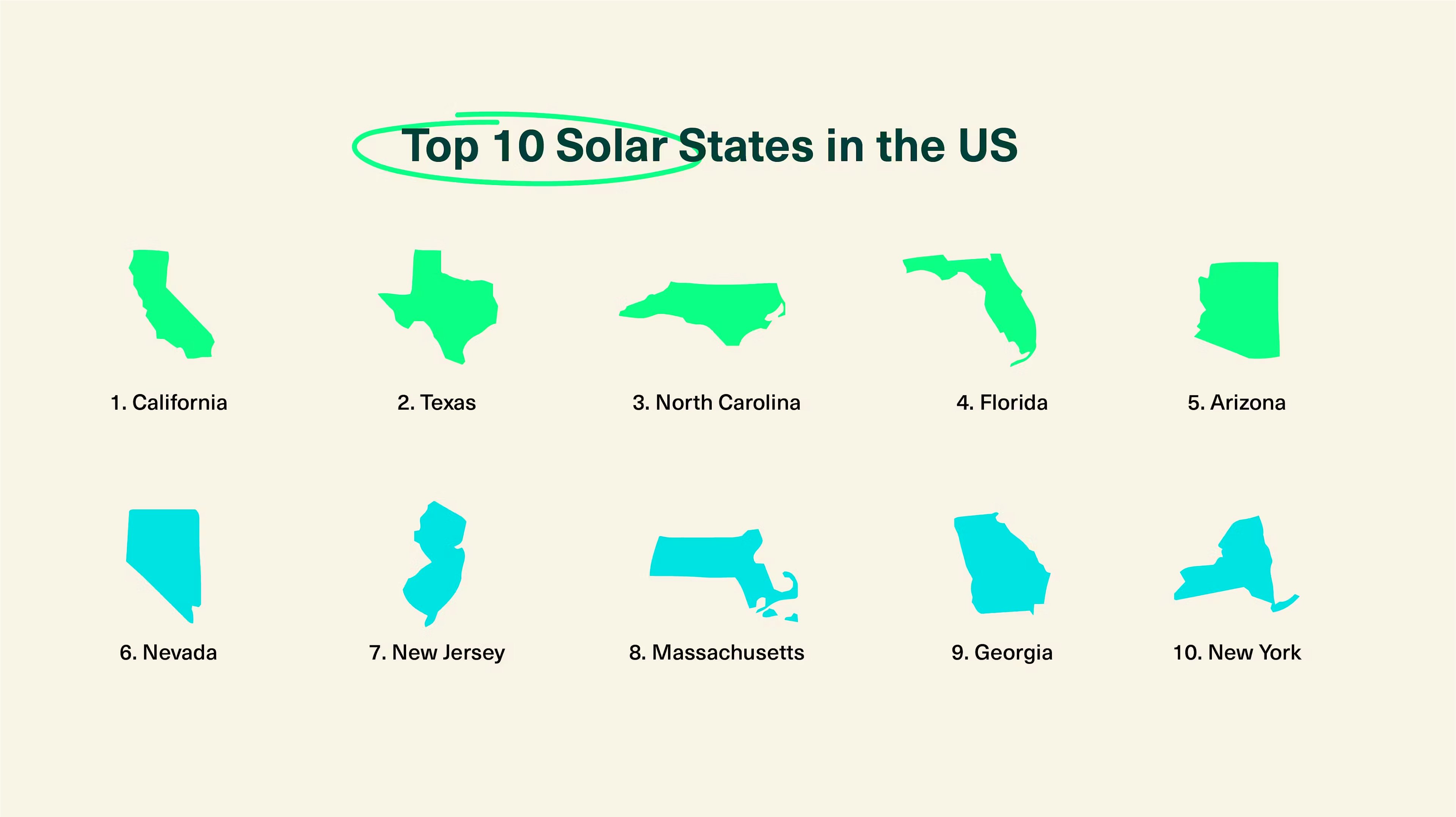What is solar energy?

It’s official: renewable fuel sources have eclipsed fossil fuels when it comes to new energy-generation projects— in January 2021, 84% of new energy coming onto the power grid was slated to be green. Solar accounted for the largest share of this (39%), followed by wind (31%). Fossil fuels were far behind at just 16%. These numbers reflect a new chapter for the US economy: a shift away from polluting sources of power and toward greener pastures.
Since then, we’ve seen a wave of investments in solar and other renewables. President Joe Biden proposed a 10-year extension of solar investment tax credits, New York state announced that its first utility-scale solar project is nearing completion, and Pennsylvania committed to powering half of government buildings with solar by 2023, to name just a few.
Long story short, solar power is increasing in popularity and accessibility. Since 2010, the industry has grown by 42%. Costs for manufacturing and installing solar panels, on the other hand, have dropped (by a lot: the average solar panel is 70% cheaper today than it was in 2014). Currently, solar generates enough energy to power 18 million American homes. By 2030, analysts predict that one in seven US homes will have rooftop solar panels.
But what exactly is solar power? And how does it work?
How is solar power generated?
“Solar energy” refers broadly to the electrical power that is generated from the sun’s heat and light and converted into currents through solar panels. The sun, a large ball of gas and light, is full of atoms that are generated at its core and fused together through intense pressure and heat. The atoms move up through each layer of the sun to be released into space as kinetic energy, or energy created through movement. They travel through space to bring light and warmth to us here on Earth, where they sometimes hit a solar panel. That’s where the magic happens.

Every solar panel is made up of smaller solar cells, which are made of photovoltaic cells. Each solar cell is made up of two layers of silicon — one that is electronically positive (i.e., it has more protons than electrons) and one that is electronically negative (i.e., it has more electrons than protons).
When particles of light energy, called photons, reach Earth’s surface from the sun, they strike these solar cells with enough momentum to move the electrons inside the two layers of silicon. This movement conducts an electrical current, which is either converted into usable energy or stored in a battery to be used later.
How is solar energy used?
The energy solar cells generate can be sent to any number of sources: A mini solar-powered phone charger, for instance, would store and send this current into a phone to give it juice. A solar panel on the roof of your house would send voltage into your home’s electrical panel, powering your outlets and devices and reducing your utility bills along the way.

Some solar panels generate electrical currents that are sent to the grid — a massive network of electrical poles, wires, and transmitters that delivers energy to our homes, shops, office buildings, and community buildings. So, even if you don’t have solar panels, your home could still be using solar energy.
Why is solar considered renewable energy?
The best part of this process? Unlike burning wood or gas, the sun never runs out. Non-renewable energy sources, like oil or coal, at some point reach an end. There’s only so much oil and gas in the earth’s layers, and they will eventually run out. But as long as the sun keeps generating photons (which it should for many more billions of years), we can keep generating electrical currents from its energy. Solar power naturally self-generates and is not likely to reach an end. That makes it a renewable energy source.
On top of this, solar power is emission-free. Burning fuels to generate energy releases gases like carbon dioxide into the atmosphere. Those greenhouse gases stay in the atmosphere and trap heat — that’s how global warming happens. But generating energy from solar panels doesn’t release any greenhouse gases. Solar is a clean source of power. If we use more solar energy and less fossil fuel energy, we can reduce the amount of greenhouse gases emitted into the atmosphere and slow the rate of global warming.
The future of solar power looks bright
Most advanced photovoltaic solar panels have the technology to track the sun. The panels rotate to follow the sun over the course of a day to maximize the number of photons they receive. But that’s hardly the most innovative development in the solar space.

In 2018, a group of researchers from Soochow University in China developed solar panels that also generate electricity from the mechanical energy produced by raindrops hitting a solar panel’s surface. Known as all-weather solar panels, these panels continue generating an electric current in any weather conditions, including on rainy days and at night. While solar panels work perfectly well even in areas that don’t get a lot of sun, advancements like these could make it an even more viable source of energy.
Across the industry, researchers are working to make technology more widespread and increase solar’s potential to generate as much energy as fossil fuels. New technologies, such as photovoltaic windows, roads, and paint, are all being tested with varying degrees of success. With all these advancements, we can get the US to where it needs to be in its clean energy transformation.

Sign up for solar savings
Sign upSimilar articles

Solar provides numerous benefits, both environmental and financial. But is it really as great as it seems? Let’s break down the pros and cons of solar power.

In a matter of years, solar power has gone from a relatively obscure form of energy to one of the fastest-growing power sources in the world.

Whether you’re searching for a clean energy alternative or looking for ways to reduce your electric bill, you’ve probably thought about installing solar panels on your property. But do solar panels really save you money? And if so, how much? Is the upfront cost worth it?